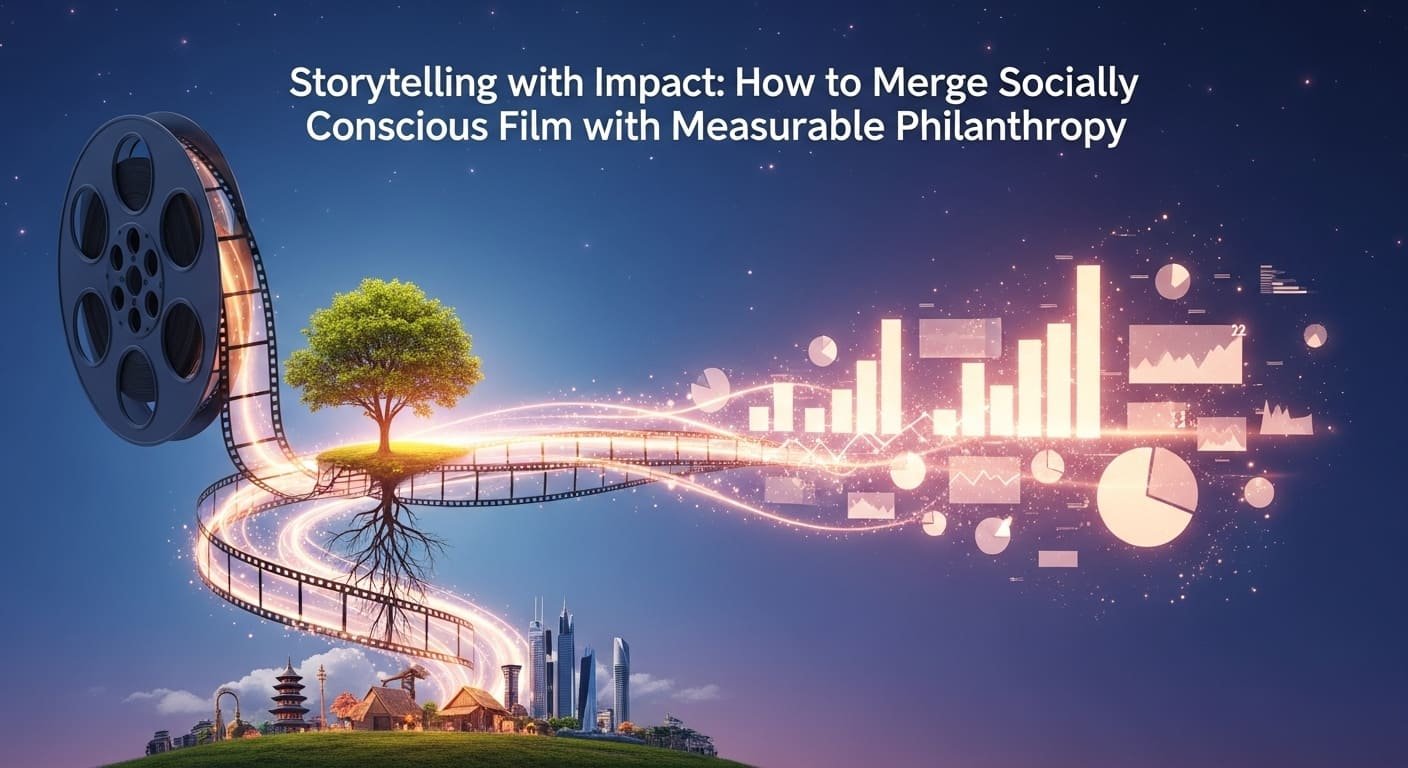The Sol-Vision Blueprint: From Vision to Action
In today’s media landscape, a powerful story can do more than just entertain—it can catalyze real-world change. At Sol Caritas and our film division, Sol-Vision, we operate on the principle that storytelling is a form of leadership. It’s about turning vision into action and pain into purpose. This guide offers our blueprint for creating socially conscious media that not only reaches audiences on major platforms but also builds a tangible, philanthropic legacy. It’s not just about making a film; it’s about starting a movement.
Step 1: Develop Your Story with a Core Mission
Every impactful project begins with an authentic story. Before a single scene is shot, the foundation must be built on a clear, socially conscious mission.
- Identify the ‘Why’: What social issue, underrepresented voice, or cultural truth is at the heart of your narrative? Your story’s theme should be inextricably linked to the change you want to see. This isn’t about tacking on a message; it’s about letting the message drive the narrative.
- Authenticity is Non-Negotiable: Socially conscious storytelling demands a commitment to truth. Elevate voices that have been silenced and tell stories that challenge perceptions. This authenticity will resonate with audiences and attract partners who share your values.
- Pre-Visualize the Impact: From the earliest stages of development, ask: What is the desired outcome of this film beyond viewership? Is it to raise funds for a specific cause, drive awareness to influence policy, or provide resources for a community? This end goal will inform your creative and logistical decisions throughout the process.
Step 2: Engineer Philanthropy into the Production Pipeline
A common mistake is treating the philanthropic goal as an afterthought. To be effective, it must be integrated into the logistical and creative execution of the project from day one.
First, identify and vet your nonprofit partners. Look for organizations whose work directly aligns with your film’s core message. We have been privileged to support over one hundred nonprofits by ensuring their mission and our story are in perfect sync. A successful partnership is built on shared ethics and a unified vision for change.
Second, structure the give-back model. There are several ways to build a philanthropic component into your film’s business plan:
- Profit-Sharing Pledges: Allocate a percentage of the film’s net profits directly to your partner organization.
- Impact Campaigns: Use the film as a centerpiece for a dedicated fundraising campaign, with premiere screenings and events serving as donor opportunities.
- Audience-Driven Donations: Embed a clear call to action within the film and its marketing materials (e.g., a QR code in the credits, a dedicated URL) that directs viewers to a donation portal.
Step 3: Secure Distribution by Selling the Whole Package
Getting your film onto major platforms like Amazon Prime Video and Tubi is crucial for maximizing reach. When pitching to distributors, you aren’t just selling a movie; you are selling an event with a built-in community.
Highlight how the film’s socially conscious angle and integrated philanthropic mission create a unique value proposition. This approach demonstrates that your project has:
- A Pre-Existing, Passionate Audience: The community around your chosen social issue is your initial, motivated audience.
- Enhanced Marketing Potential: Partnerships with nonprofits provide cross-promotional opportunities, amplifying your marketing reach authentically.
- A Lasting Legacy: Unlike content that fades after opening weekend, a film tied to a cause has a long-term relevance, making it a valuable asset for any streaming library.
Conclusion: Creating a Cultural Legacy
Merging socially conscious storytelling with measurable philanthropy is the work of a Cultural Architect. It transforms a media project from a piece of content into a sustainable engine for social good. By strategically aligning your story, production logistics, and distribution strategy around a core philanthropic mission, you create a powerful ripple effect that extends far beyond the screen. You build a legacy, one story at a time.

